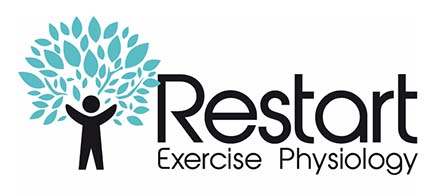Weight loss is a significant concern for the general population, with countless individuals seeking to reduce the burden of excess kilograms to improve their overall health and well-being. Historically, the human population has been afflicted with conditions of malnutrition and lack of access to food (this still does unfortunately exist throughout the world particularly throughout sub-Saharan Africa); the global obesity epidemic is borne from excess consumption and gross intake of sugars, processed foods and unhealthy fats. And for many, inactivity when it comes to physical activity.
Alarmingly, overweight and obesity is now linked to more deaths worldwide than underweight (6).
Stats on the obesity epidemic 😳
The Australian Bureau of Statistics conducted a National Health Survey from 2017–18 which revealed that 67 per cent of Australian adults were overweight or obese (12.5 million people). If the current trend continues, more than 18 million Australians will be overweight or obese by 2030. Globally, worldwide obesity has nearly tripled since 1975 (6) (click here to learn more on what the Australian Department of Health and Aged Care is doing to combat the obesity epidemic (1)).
Exercise and weight loss
Energy balance is the number one factor to achieving weight loss. The body receives energy by eating and drinking and uses energy through daily movement, think chewing, fidgeting, walking to the kitchen and hanging out the washing, and structured physical activity.
Exercise is an integral tool for weight loss. Certain types of exercise stimulate the body to burn energy up to 48 hours post-exercise – this adaptation to exercise is known as excess post-exercise oxygen consumption (EPOC). This means the body requires additional oxygen to repair and replenish muscle tissue which in turn elevates the metabolic rate leading to increased caloric expenditure even while you’re sleeping!
For people who are short on time, HIIT (High Intensity Interval Training) may be your best friend – research showing 20 sec sprints on a stationary bike for 8 rounds with 10 seconds rest between rounds will burn more calories per minute compared to a 20-minute run in the park (2). Click here to learn more on a previous Restart blog detailing another time-effective HIIT protocol.
Exercise and Diabetes-prevention
Resistance training improves insulin sensitivity which is key for weight loss and reducing weight gain. This increases the body’s ability to use glucose efficiently. Resistance training reduces the risk of excess glucose being stored as fat particularly around the stomach, which has a higher risk of causing cardiovascular disease and type 2 diabetes (3).
Exercise training can reduce excess weight around our organs (known as visceral fat – click here to learn more on the dangers of visceral fat) while at the same time increasing our muscle mass. Exercise enhances metabolism and supports the preservation of lean muscle mass, which is crucial for sustained weight loss. Exercise creates muscle and muscles require energy leading to a further caloric deficit. A mix of brisk-walking/jogging/running (depending on your weight loss progression), cycling, swimming, bodyweight exercises and resistance training are all effective exercise options (4).
Research has shown that a minimum of 150 minutes per week of moderate to vigorous exercise will prevent weight gain. That equals to 30mins per day, 5 days per week (5). Exercise also reduces stress and increases quality of life, leading to better sleep and stress management, both of which are contributors to weight gain and unhealthy eating habits.
Exercise for the elderly
For the elderly population resistance training has shown to be one of the most effective interventions to slow the progressive loss of muscle, strength and bone mass associated with age. Engaging in frequent structured exercise is also crucial for overcoming chronic conditions that become more prevalent as we age. Exercise is also evidence-based to help reduce falls risk, improve quality of life, and maintain independence.
Another sometimes overlooked factor of exercise is that it brings people together. Research shows that support systems are a main contributor for motivation, accountability and encouragement throughout your health journey. Exercising in an environment with others striving towards similar outcomes can provide emotional support and make the process more sustainable.
Conclusion
In my career working as an Exercise Physiologist, I’ve learnt that lifelong change is created by small habitual changes maintained consistently over-time.
If you’re not sure where to start or would like to know the best type of exercise for you and your lifestyle goals, book an appointment with myself, Nick Del Monte online. I am available for bookings at both our Chermside & Carseldine locations.
References
- https://www.health.gov.au/ministers/the-hon-greg-hunt-mp/media/australias-first-national-obesity-strategy-launched-on-world-obesity-day accessed 10th August 2023
- Ahlert, M. et al. (2019) ‘Comparison of EPOC and recovery energy expenditure between HIIT and continuous aerobic exercise training’, Revista Brasileira de Medicina do Esporte, 25(1), pp. 20–23. doi:10.1590/1517-869220192501181346.
- Kong DX, Xiao YX, Zhang ZX, Liu YB. Study on the Correlation between Metabolism, Insulin Sensitivity and progressive weight loss change in Type-2 Diabetes. Pak J Med Sci. 2020 Nov-Dec;36(7):1523-1528. doi: 10.12669/pjms.36.7.3027. PMID: 33235568; PMCID: PMC7674895.
- Cox CE. Role of Physical Activity for Weight Loss and Weight Maintenance. Diabetes Spectr. 2017 Aug;30(3):157-160. doi: 10.2337/ds17-0013. PMID: 28848307; PMCID: PMC5556592.
- Donnelly, J. E., Blair, S. N., Jakicic, J. M., Manore, M. M., Rankin, J. W., Smith, B. K., & American College of Sports Medicine (2009). American College of Sports Medicine Position Stand. Appropriate physical activity intervention strategies for weight loss and prevention of weight regain for adults. Medicine and science in sports and exercise, 41(2), 459–471. https://doi.org/10.1249/MSS.0b013e3181949333
- https://www.who.int/news-room/fact-sheets/detail/obesity-and-overweight accessed 22nd August, 2023

0 Comments